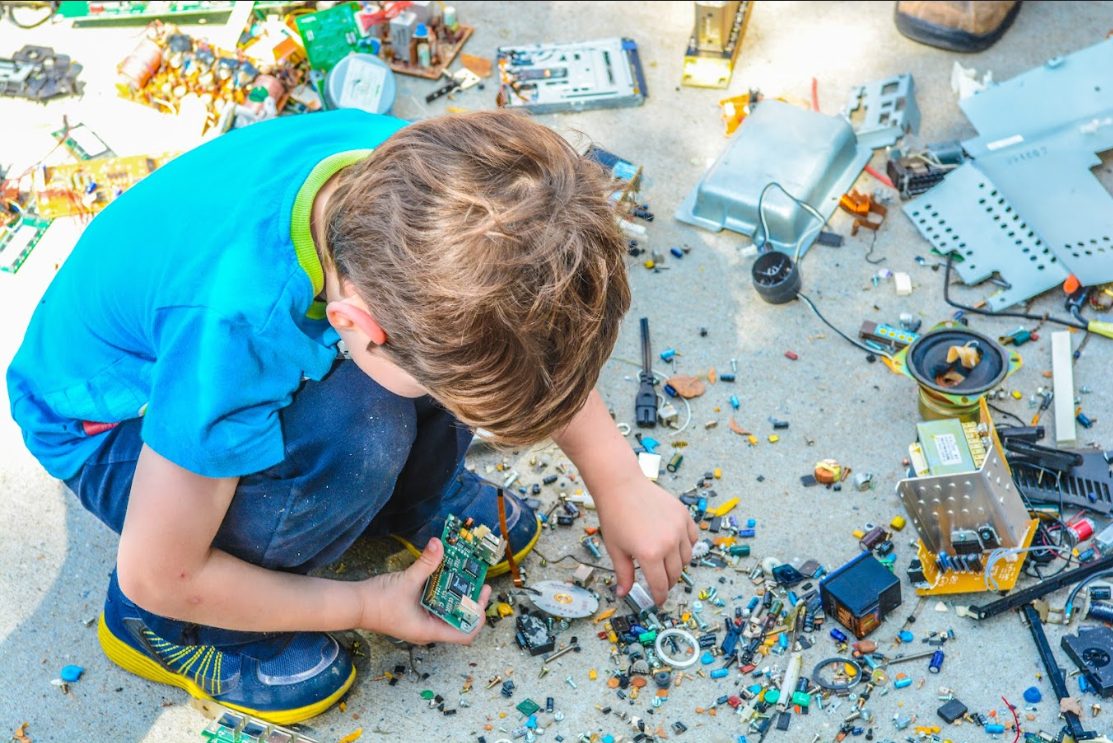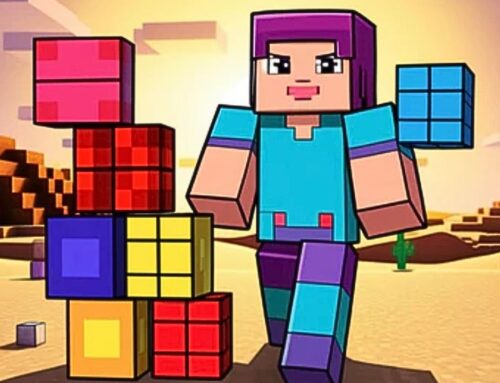STEAM learning is so much more than learning the subjects of science, technology, engineering art and math. It prepares kids with important skills that set them up for success and promotes teamwork by encouraging kids to test hypotheses together and work towards a common goal.
Kids can gain confidence with their reasoning skills and learn to be supportive of others while exchanging ideas. STEAM also encourages tech literacy, a ton of creativity and integrative problem-solving.
“It isn’t about focusing on one part of the project at a time. It’s multidisciplinary and all-encompassing, and that makes for rich learning experiences,” says HomeLearners Network (HLN) Guide, Alecyn. “Real life is cross-disciplinary. People use collections of different skills all the time – in jobs or in other aspects of real life.”
 Alecyn is no stranger to using STEAM-type learning in real-world situations. For example, she and her partner built a tiny home out of a school bus during the COVID-19 pandemic!
Alecyn is no stranger to using STEAM-type learning in real-world situations. For example, she and her partner built a tiny home out of a school bus during the COVID-19 pandemic!
“I’ve never lived in a vehicle before, but I watched a lot of tiny home videos and thought we could just make it,” Alecyn reflects. “We had so much to learn about insulation, electricity and plumbing. We learned about 3D design and modeling, and were always experimenting with ways to improve the bus to suit our needs.”
It might feel like STEAM learning should be reserved for older kids, but it can do incredible things for brain development in younger kids too!
“STEAM can be started at any age. For example, LEGO and block building are STEAM exercises,” says Alecyn.
We sat down with Alecyn to talk about her favourite benefits of STEAM learning for kids.
1. Promotes independent thinking
“STEAM projects don’t involve someone telling you what to do, which I think is amazing for kids,” says Alecyn. “They’re given tools or materials and asked to solve a problem, and then get to figure out exactly how they want to do it.”
When kids are asked to solve problems on their own terms, it empowers them to develop critical thinking, creative thinking and problem-solving skills.
“These are the skills they’re going to need when they graduate,” says Alecyn, while reflecting on the idea that many kids may end up in careers that don’t exist yet. “Giving them the skills to learn, to problem solve and to critically think is what is most important in their learning.”
2. Builds resilience
“STEAM teaches kids the concept of failing to succeed. It helps them be okay with making mistakes or having something not work,” says Alecyn. “The whole engineering design process is about iteration. You can come up with a design and decide whether it worked or didn’t work and whether it can be improved. It’s not about having the perfect answer or doing an amazing job the first time.”
Being comfortable with failure is an incredibly important skill, and encourages kids to appreciate the process while understanding that positive outcomes are still possible.
This not only builds resilience but helps them open up to trying new things in pursuit of lifelong learning.
3. Super fun and hands-on
STEAM projects involve conducting experiments around interesting topics and can help ignite curiosity about the world.
“The learning is really authentic, engaging and memorable,” says Alecyn. “Kids are doing something rather than reading about it or watching a video. They get to feel it. They get to experience it. They get to make art with it.”
4. Has real-world implications
STEAM learning encourages kids to actively think about ways to make things better or easier for themselves and their peers.
“It can empower kids to think ‘I could make that’ or ‘I could improve that,’” says Alecyn. “It gives them the ability to go into the real world and think about the things they connect with and see every day in new ways.”
5. Involves a lot of creativity
“If you look at how STEAM is used in the real world, art and design are a huge part of architecture and product creation,” says Alecyn. “It’s a very human thing to want to make things that are beautiful or to make things that represent culture or ideas. It’s not just about what the thing does, it’s also about how it looks and how it interacts with other objects in our world.”
Through STEAM, kids are able to test new ideas using core principles. When they’re encouraged to think outside of the box and use their creativity, brand-new techniques, designs and systems may have the potential to change the world (or at least make their own lives a little easier!)
 Cardboard Inventors with Alecyn
Cardboard Inventors with Alecyn
If your kids are between ages 6 and 12, join Alecyn for her new HomeLearners Network Camp, Cardboard Inventors!
Kids will use STEAM thinking to create things like instruments, vehicles and arcade games using recycled materials.
“Each week will have a different theme,” says Alecyn. “We’re going to learn about simple machines and have fun design challenges. All participants will need is cardboard boxes, tape, glue and a positive attitude!”
👉 Register today for Cardboard Inventors starting July 17, August 1 or August 14.







